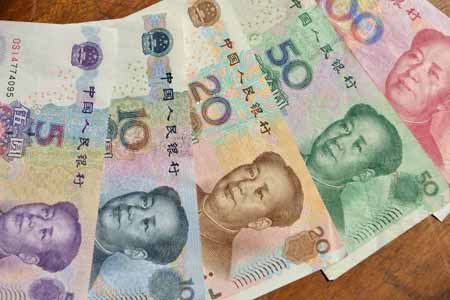No products in the cart.
China Travel Information
China Currency
For anyone who first time come to China, it is a little difficult to spend money in the right way. These practical tips will help you to have a worthy China shore excursion.
Renminbi which was first introduced by the People's Bank of China has been the official name of Chinese currency since 1948. During 51 years between 1948 and 1999, it was designed five times including 1st series (1948), 2nd series (1955), 3rd series (1962), 4th series (1987) and 5th series (1999). This currency is often abbreviated RMB or CNY (Chinese Yuan) in international contexts as Yuan is Renminbi’s primary unit. One yuan is subdivided into ten jiao and one jiao is subdivided into ten fen. CNY whose symbol is ¥ has been used as the official currency of the People's Republic of China not including Hongkong and Macau.

Renminbi issued in both coin and banknote forms comes in denominations of 1 and 5 jiao coins, 1 CNY coin, 1, 5 jiao banknotes, 1, 5, 10, 20, 50 and 100 CNY banknotes. Although the coins which are popular in rural areas are still valid in exchange, they seem to be rarely seen in circulation. Currently, the 5th series banknotes whose observe contains the image of former Chinese leader Mao Zedong instead of many leaders and workers in previous series are most commonly used in mainland China. The description below would provide detailed information regarding all coins and banknotes in circulation:
- The 1-jiao coin has its value stamped on the obverse and the image of a chrysanthemum stamped on the reverse.
- The 5-jiao coin has its value stamped on the obverse and the image of a lotus stamped on the reverse.
- The 1-CNY coin has its value stamped on the obverse and the image of an orchid stamped on the reverse.
- Both 1-jiao and 5-jiao banknotes have the emblem of the People's Republic of China stamped on the obverse and the Chinese minority faces stamped on the reverse.
- The 1-yuan banknote has a portrait of former Chinese leader Mao Zedong stamped on the obverse and the Xihu Lake in the southeastern Chinese city Hangzhou stamped on the reverse.
- The 5-yuan banknote has a portrait of Mao Zedong stamped on the obverse and Taishan Maintain (a mountain in east China's Shandong province listed by the UNESCO as a world natural and cultural heritage) stamped on the reverse.
- The 10-yuan banknote has a portrait of Mao Zedong stamped on the obverse and a drawing of the scenic Three Gorges stamped on the reverse.
- The 20-yuan banknote has a portrait of Mao Zedong on the obverse and a drawing of the scenic Lijiang River in South China stamped on the reverse.
- The 50-yuan banknote has a portrait of Mao Zedong stamped on the obverse and the landmark Potala Palace in Lhasa stamped on the reverse.
- The 100-yuan banknote has a portrait of Mao Zedong stamped on the obverse and a picture of the Great Hall of the People stamped on the reverse.
As regards Chinese Yuan currency exchange rate, 1 USD has equaled to 6.64 CNY (September 4th, 20016).
Before going on a China shore excursion, it is recommended that you exchange money in your own country or at the airport. The reason is that when you get to mainland China, you would find it very difficult to exchange your money for Chinese Yuan. Especially, be careful when exchanging money or purchasing goods as there are a large amount of counterfeit money existed in China.





